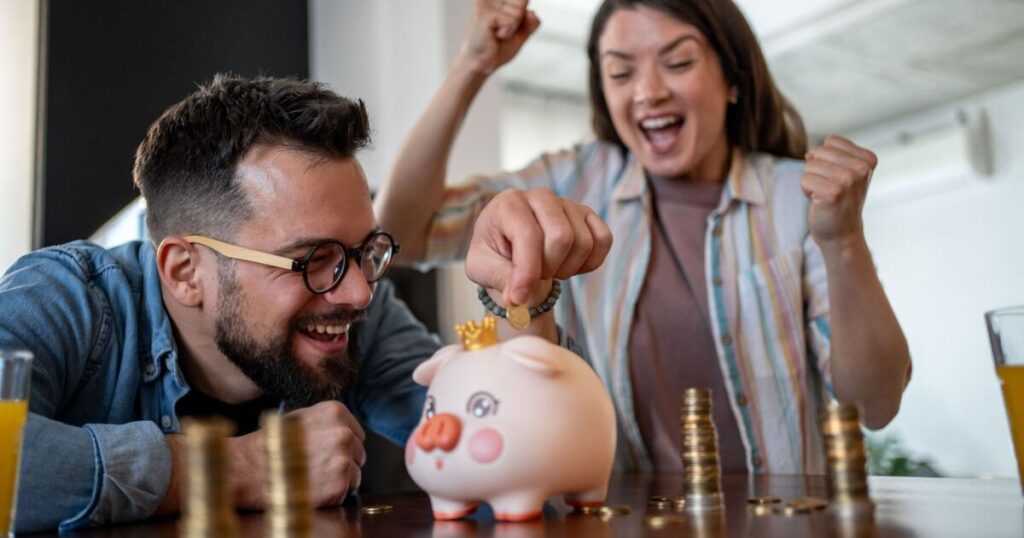
Savers can take advantage of a type of savings account offering 5.375% interest but they will need to act fast and have a minimum of £1,000 to invest. The Treasury has launched a new gilt offering 5.375% interest until January 2056, which means savers will need to commit to saving their cash for 30 years.
Gilts are government bonds which are issued to help fund public spending, although they are very similar to cash-based savings accounts.
The word gilt means gold-edged or government backed.
Dan Coatsworth, investment analyst at AJ Bell said: “In the current market, 5.375% equivalent interest could have investors jumping for joy.
“A bank offering that rate on a cash savings account might have a long line of people queuing up to hand over their money. The rate is much higher than the current best-buy cash deals on the market for instant access and five-year fixed rate savings and it’s also more generous than the 3.3% prospective dividend yield on the FTSE 100.
For many savers the rate being offered is attractive if they are happy to invest and forget about it.
Coatsworth said: “Some people might think they can easily make in excess of 5.375% a year through investing in the stock market. While that is true, investing in stocks and shares comes with much higher risks than investing in gilts.
Anyone interested in taking part in the gilt offer need to get their skates on.
Coatsworth said that on the AJ Bell platform, orders need to be made by 2.30pm on Monday 19 May, with Wednesday 21 May being the first day of trading. “After that point, there should be a secondary market in the gilt, but liquidity is unknown. The first interest payment will be made on 31 July 2025 and the gilt will mature on 31 January 2056.”
AJ Bell said more savers had been buying gilts in recent years.
The rapid rise in the Bank of England’s base rate in 2022 and 2023 to cool the rate of inflation made cash an attractive place to earn a decent return.
That dynamic is now fading away as the Bank of England has begun a journey to cut rates. Interest rates on cash savings have slowly been coming down since summer 2024 and that’s prompting savers and investors to look at alternatives to cash such as gilts.
“Gilts have also appealed to investors who have used their annual ISA allowance – they’ve been buying gilts with the hope that prices go up and they can make a quick profit. Gilts are advantageous because you don’t pay any tax on capital gains.
Gilts are also exempt from capital gains tax which means they are attractive savings vehicles for higher and additional rate taxpayers.
Coatsworth said if interest rates go up, gilt yields could also move higher. He said: “That means future gilt issues could have a more attractive headline yield and investors might sell their existing gilts to buy the newer ones. That process could push down the price of existing gilts.
“This wouldn’t matter to anyone intending to hold a gilt until maturity, as they would be repaid the original face value of the government bond. However, an investor would need to be prepared for movements up and down in the gilt during its lifespan in line with changing interest rate expectations. That means someone holding to maturity should buy and forget rather than regularly checking the price in the way they might do for stocks and shares.”
However, there are still some dangers, although gilts can be sold on the secondary market, they are a long-term savings option.
 Latest World Breaking News Online News Portal
Latest World Breaking News Online News Portal






